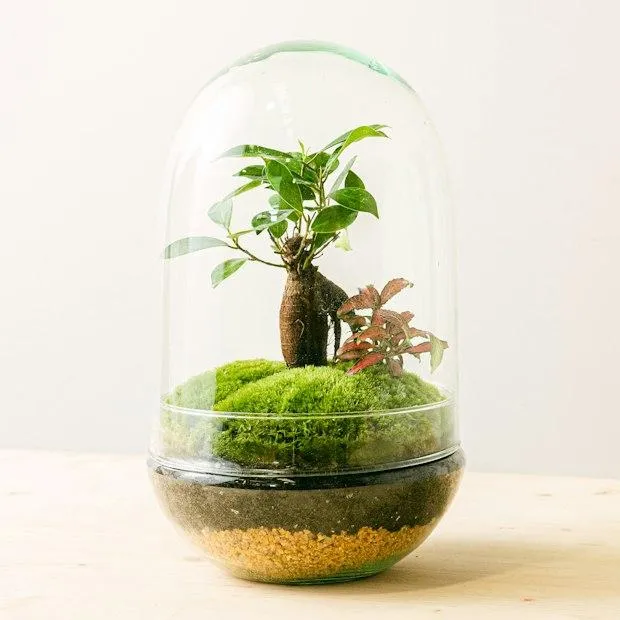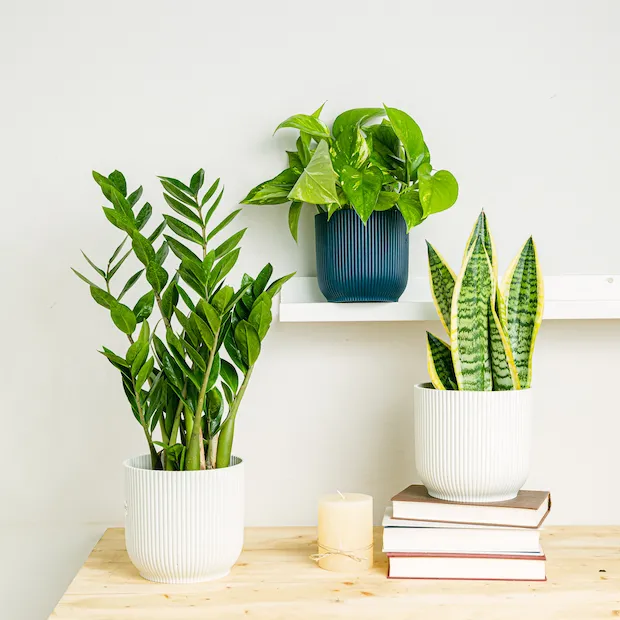A Complete Guide to Propagating English Ivy
If you’re interested in growing English ivy (Hedera helix) but don’t know where to start, you’ve come to the right place. In this detailed guide, I’ll cover everything you need to know to successfully propagate this popular houseplant from cuttings. By the end, you’ll have all the answers to successfully root and grow your own English ivy plants from stem cuttings.
Why Would I Want to Propagate English Ivy?
There are several good reasons why someone might want to propagate their own English ivy plants rather than purchasing starter plants. For one, propagating from cuttings allows you to grow as many new ivy plants as you want for free once you have an established mother plant. It’s a very cost-effective way to get new greenery. Another reason is so you can share cuttings with friends and family members. Who doesn’t love receiving homegrown plant gifts? Propagating ivy also gives you the satisfaction of nurturing new plants from remnants of the old.
English ivy is also an extremely popular decorative plant that trails beautifully in hanging baskets or trained onto trellises and structures. Being able to grow more from stem cuttings ensures you’ll always have an abundant supply for decorating your home, garden, or for gift-giving.
Choosing Stem Cuttings
The best time to collect stem cuttings from your English ivy is in late spring or early summer after the ivy has become actively growing again. This gives the cuttings the best chance of rooting successfully. When selecting stem cuttings, choose long, flexible stems that have at least 3-5 leaves. The cuttings should be green and healthy-looking with no signs of wilt, spots, or other damage.
Use sterilized scissors or pruners to trim the stems just below a leaf node (where the leaves are attached to the stem). A node is necessary for root development. Try to take cuttings that are 6-12 inches in length. Sealing the freshly cut stem ends with a bit of wax or latex paint will help prevent water loss as the cuttings establish. Once cut, immediately pot up the cuttings.
Potting Up the Cuttings
As for container prep, you’ll want to use a well-draining potting mix specifically formulated for rooting cuttings. Avoid regular potting soil which stays too wet. A good rooting mix contains ingredients like perlite or vermiculite for aeration. Fill your container about 2/3 full with rooting mix and firm it gently.
Next, insert the ivy stem cuttings about 1-2 inches deep into the soil, spacing them an inch or two apart. The node should be just below the soil surface. Gently firm the soil around each cutting. Cuttings can also be rooted in water but soil usually results in better root development and acclimation to soil conditions.
Place the freshly potted cuttings in a warm, partially shaded spot out of direct sun. Consistently moist but well-draining soil is key, so check daily that the top inch of soil is still slightly moist but not soggy. Once roots have formed, cuttings can be gradually hardened off and moved to a brighter spot with regular potting soil. Roots should develop within 4-8 weeks.

Caring for Rooted Cuttings
Some additional care tips to ensure your newly rooted English ivy cuttings establish successfully include:
- Mist the leaves frequently to keep them humid as roots develop
- Use a plastic bag or dome to increase humidity around the cuttings initially
- Fertilize weakly every 2-4 weeks once new growth emerges
- Transplant rooted cuttings to individual pots when well-established
- Gradually expose cuttings to brighter light as they acclimate
- Water whenever the top inch of soil dries out
English ivy is extremely resilient and forgiving when it comes to growing conditions. But following these propagation tips will give your cuttings the best odds of rooting successfully so you end up with bountiful new potted ivy plants within a few short months.
Dealing with Potential Problems
While English ivy is quite hardy, a few potential issues can come up when propagating from stem cuttings that are worth addressing.
One common problem is stem cuttings that fail to root. This is usually due to cuttings being taken at the wrong time of year or from unhealthy, leggy growth. It may take a few tries to get the method dialed in. Rotting can also occur if the soil stays too wet. Fungal or bacterial infections are rare but can be treated with a fungicide drench if they affect a whole batch.
Legginess or lack of bushiness is another issue sometimes seen in rooted cuttings. Supplementing fertilizer or moving plants to a slightly brighter spot can encourage more compact growth. Cuttings may also vine excessively instead of rooting if humidity is too low. A humidity dome helps circumvent this issue.
Pests like spider mites can attack weakened cuttings trying to root. Scouting regularly and isolating infested cuttings is key. As long as cutting care basics are followed rotting and pests shouldn’t pose major problems for most propagation attempts.
With some practice, you’ll gain the experience needed to achieve a very high rooting success rate for your English ivy cuttings. Soon you’ll have multiplied your plants many times over using this simple propagation method.
Frequently Asked Questions
Here are some additional questions people commonly have about propagating English ivy:

Can cuttings be taken year-round?
While spring and summer are best, cuttings can technically be rooted any time the plant is actively growing. Success rates may drop slightly in other seasons.
How often should I prune my mother plant?
No more than 25% of the plant’s total growth should be pruned at once. Leave 6-8 weeks between pruning to allow it to regrow before taking more cuttings.
Can cuttings be rooted in water only?
Yes, water propagation works well too. Just change the water every 5-7 days and transplant to soil once roots appear 2-3 inches long.
How long before cuttings can be transplanted?
Most are ready for individual pots once they’ve developed 3-4 sets of leaves, around 2-3 months after rooting. Hardier, bushier growth is the goal before repotting.

I hope this comprehensive guide has provided all the information needed for someone interested in propagating English ivy from stem cuttings to feel fully equipped and successful! Let me know if any other questions come up.
Propagating English Ivy
| Growing Season | Spring-Fall |
|---|---|
| Water Needs | Moderate, allow soil to dry between waterings |
| Sunlight | Partial shade to full sun |
| Propagation Methods | Stem cuttings, layering, division |
| Planting Medium | Well-draining potting soil |
| Pruning | Trim as needed to control spread and shape |
| Fertilizer | In spring and summer, use diluted liquid fertilizer every 2-4 weeks |
FAQ
-
How can I propagate english ivy?
English ivy basically grows sort of easily. You can propagate it from stem cuttings. Simply take 4-6 inch cuttings from a plant in the spring or summer, remove the bottom leaves, and plant them directly into potting soil. Keep the soil damp but not soggy. New growth should appear in a few weeks. You can also propagate from leaf cuttings, where each leaf has a chance of sprouting a new plant. Just place the leaves on damp soil and see what happens! Kind of a fun experiment.
-
What is the best time of year to propagate english ivy?
The amazing time to propagate english ivy is in late spring or early summer. The warm soil and longer days help the cuttings to form roots quicker than other times of the year. However, you can take cuttings throughout most of the growing season with a decent chance of success. English ivy is one tough plant! Perhaps try taking some cuttings in different seasons to see what works best in your area.
-
How long does it take for english ivy cuttings to root?
It typically takes english ivy stem cuttings around 2-4 weeks to start forming new roots. The roots will appear as tiny white structures emerging from the bottom of the stem. Keep the soil continuously damp but not soaked during this time. You may start to see new growth or leaves unfolding above ground within a month or two. Isn’t plant propagation amazing? It allows you to multiply your plants with basically no cost at all.
-
Can you propagate english ivy from a single leaf?
Believe it or not, you can propagate english ivy from a single leaf cutting! Experts say each leaf has a chance of sprouting a whole new plant. Simply place the leaf on damp potting soil, make sure it stays moist, and wait to see what happens. It may take several months, but sometimes you’ll see roots and a tiny plant emerge. English ivy leaf cuttings work better in the spring and summer. Still, it’s worth a shot any time – you never know what might happen! On the other hand, stem cuttings are generally more reliable.
-
How do you care for english ivy cuttings after they have rooted?
Once english ivy cuttings have formed roots, move them to individual pots with good potting soil. Continue keeping the soil moist and provide partial shade. Eventually the cuttings can be moved to full sun. In one to two years, the rooted cuttings should be large enough plants to transplant outdoors or to larger pots. You can also plant them directly in gardens or in hanging baskets once roots are established. Be sure to fertilize during the growing season. With some luck and care, your ivy propagation project will be amazingly successful!
-
When can english ivy cuttings be planted outdoors?
Generally, english ivy cuttings that have been growing indoors over winter can be planted outdoors once nighttime temperatures stay above freezing – around May in many parts. This gives the young plants time to get established before hot weather. Make sure to harden them off first by gradually increasing sun exposure over 7-10 days. You can also plant cuttings straight into the garden around May, as long as the soil isn’t soggy wet. English ivy grows like a weed outdoors. Soon you’ll have more plants than you know what to do with! Maybe share some with neighbors or friends.
-
What conditions does english ivy prefer to grow in?
As a climbing or trailing plant, english ivy thrives in shaded corners that get only a few hours of sunlight each day. It basically grows in any soil that drains well. However, ivy does best in moist, rich, well-draining soil. It can even grow in poor urban soils! English ivy grows as a houseplant anywhere light levels are low. When watered only when dry, it grows as a tough, low-maintenance option. Perhaps in a few years your homegrown ivy plants will remind you of when you propagated them yourself!

